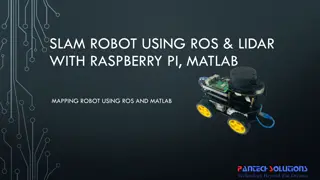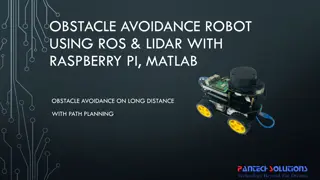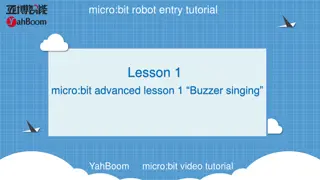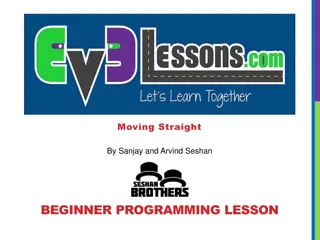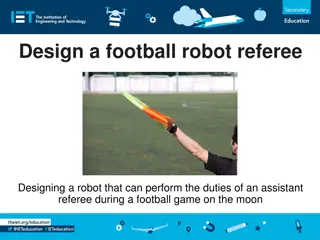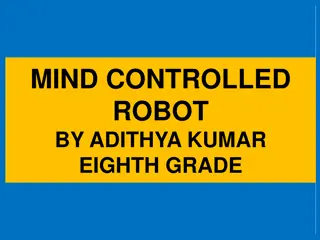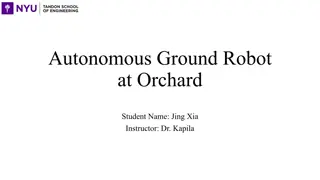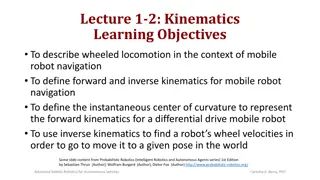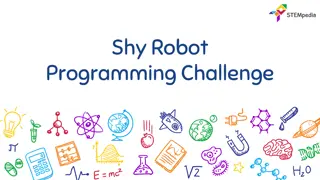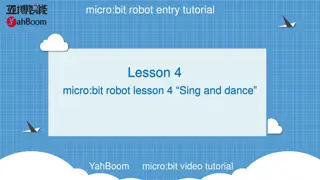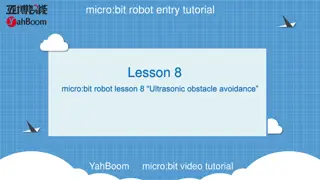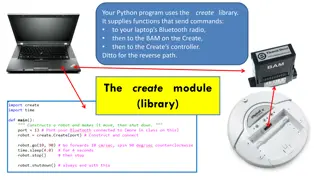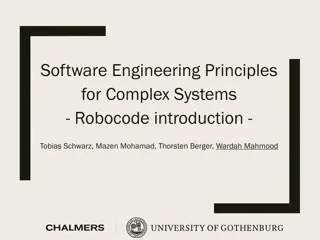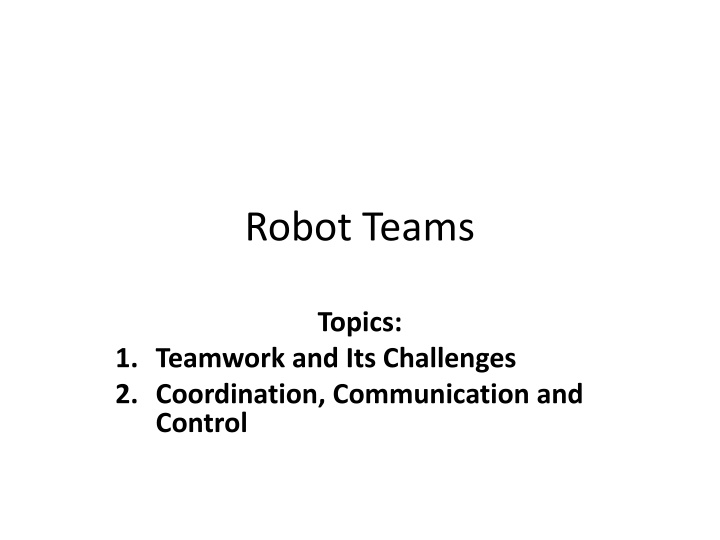
The Dynamics of Robot Teamwork
Explore the world of robot teams and their challenges, from coordination struggles to communication strategies. Discover the benefits of working in groups, types of teams, and effective coordination methods. Uncover the key role communication plays in improving team performance and achieving shared goals.
Download Presentation

Please find below an Image/Link to download the presentation.
The content on the website is provided AS IS for your information and personal use only. It may not be sold, licensed, or shared on other websites without obtaining consent from the author. If you encounter any issues during the download, it is possible that the publisher has removed the file from their server.
You are allowed to download the files provided on this website for personal or commercial use, subject to the condition that they are used lawfully. All files are the property of their respective owners.
The content on the website is provided AS IS for your information and personal use only. It may not be sold, licensed, or shared on other websites without obtaining consent from the author.
E N D
Presentation Transcript
Robot Teams Topics: 1. Teamwork and Its Challenges 2. Coordination, Communication and Control
Why Teams? It takes two (or more) Such as cooperative transportation: Pushing a box, fragile objects Better, faster, cheaper Such as Foraging , more robots can cover a larger area, but too many could get in each other s way Being everywhere at once Sensor-actuator networks (for intruder, emergency monitoring), habitat monitoring Drones Having nine lives Increased robustness because of redundancy (robots share the same structure and capabilities)
Challenges of Teamwork Coordination Interference among robots, goal conflicting (one robot could undo the work of another) Communication Wireless radio is the preferred way of communication, has to avoid collisions Organization More robots, more uncertainty Cost involved More robots, more cost (hardware or maintenance)
Types of Groups and Teams Division of labor or role assignment Homogeneous Teams Identical (in form and/or function), interchangeable members Heterogeneous Teams Different, non-interchangeable members Typically requires active cooperation in order to produce coordinated behavior
Coordination Strategy Merely coexisting no communication or even recognition of each other (seen as obstacles). Interference increases with the # of members. Well-suited for foraging, construction, etc Loosely coupled group recognition, simple coordination, don t depend on each other, robust, Well-suited for foraging, herding, distributed mapping, etc Tightly coupled Cooperate on a precise task using communication, turn-taking. Dependent on each other, with improved group performance Less redundancy and less robustness e.g. soccer playing, moving in formation, transporting objects, etc
Communication Helps with Improving perception Synchronizing action Enabling coordination and negotiation For example using communication in foraging Nothing (could still work well in merely coexisting) Task-related state: locations of objects, # of recently seen robots, etc Individual state: ID #, energy level, # of objects collected, etc Environment state: blocked paths, dangerous conditions, new- found shortcuts, etc Goal(s): direction to the nearest object, etc Intentions: I m going that way because ...
4 How to Communicate? As humans, we Use gestures, speech, send or leave messages, etc. As robots, they use Explicit communication Broadcast, peer-to-peer, publish-subscribe Has to consider performance issue, what if message is lost? Implicit communication Individual robot leaving information in the environment Stigmergy information is conveyed through changing the environment, such as ant trails (pheromone left by ants).
5 Kin Recognition Being able to recognize others like me could be very beneficial In group robotics, kin recognition refers to Distinguishing another robot from other objects Recognizing one s team members Robots can establish a dominance hierarchy to help give structure and order to a group to avoid interference Two types of hierarchies exist: Fixed (static) hierarchy: determined once and does not change Dynamic hierarchy: formed based on some quality (e.g. strength)
Control of a Group of Robots I m the Boss: Centralized Control Single, centralized controller takes information from all other robots, thinks, sends commands to all Is slow and gets slower when the team size increases Not robust and the centralized controller is a bottleneck of the whole system Work It Out as a Team: Distributed Control Control is spread over multiple/all members of the team Each robot uses its own controller to decide what to do No central information gathering, no bottlenecks Works well with large teams, doesn t slow down with size
Architectures for Multi-Robot Control Deliberative control well suited for centralized control Reactive control Well suited for implementing the distributed control Sense & Act, but do not plan Hybrid control Good for both the centralized and distributed control The centralized controller performs the SPA (sense-plan-act) loop, individual robots monitor their sensors and update the planner. Behavior-based control (BBC) Good for implementing the distributed control Each robot behaves according to its own local BBC controller



